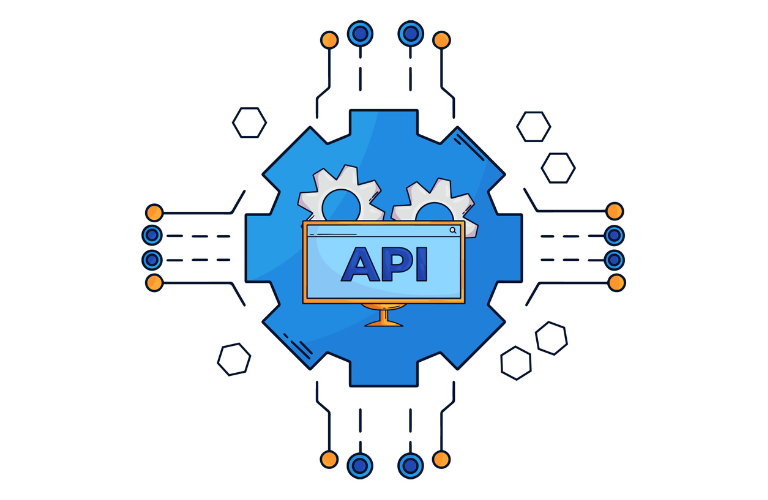PHP homomorphic encryption API integration enables developers to process and query encrypted data without ever decrypting it, ensuring privacy-compliant analytics and machine learning (ML). This approach is a game-changer for industries like healthcare, finance, and e-commerce, where data security is paramount. In this practical walkthrough, we’ll explore how to use open-source libraries and managed APIs to implement homomorphic encryption in PHP applications.
Whether you’re building secure analytics dashboards or privacy-preserving ML models, this guide provides actionable steps, code snippets, and tips to address performance challenges while maintaining a Grade 8–10 reading level for clarity.
Table of Contents
Understanding Homomorphic Encryption
Homomorphic encryption allows computations on encrypted data, producing results that remain encrypted until decrypted by an authorized party. Unlike traditional encryption, which requires decryption before processing, homomorphic encryption ensures data privacy during computation. This makes it ideal for scenarios where sensitive data must remain secure, even in untrusted environments like cloud servers.
Why is this important for PHP developers? PHP powers a significant portion of web applications, and integrating homomorphic encryption can enhance data security for user analytics, financial transactions, or medical records. However, the complexity of cryptographic operations and performance overhead can be daunting. This guide simplifies PHP homomorphic encryption API integration with practical examples.
Why Use PHP for Homomorphic Encryption?
PHP is widely used for server-side web development, making it a natural choice for integrating homomorphic encryption in web-based applications. Here’s why PHP homomorphic encryption API integration is valuable:
- Server-Side Processing: PHP’s server-side capabilities make it ideal for handling encrypted data queries securely.
- Open-Source Libraries: Libraries like Microsoft SEAL and OpenFHE provide robust cryptographic tools compatible with PHP via wrappers.
- Scalability: Managed APIs reduce the complexity of scaling homomorphic encryption for large datasets.
- Compliance: Ensures compliance with GDPR, HIPAA, and other privacy regulations by keeping data encrypted during processing.
Key Open-Source Libraries for PHP Integration
Several open-source libraries support homomorphic encryption, but not all are natively compatible with PHP. To bridge this gap, developers can use PHP extensions or WebAssembly to integrate C++-based libraries. Below are the top libraries for PHP homomorphic encryption API integration:
- Microsoft SEAL: A powerful library supporting the BFV and CKKS schemes for exact and approximate computations. It’s written in C++ but can be used in PHP via WebAssembly or custom bindings.
- OpenFHE: An open-source library with post-quantum security, offering modular APIs for various homomorphic encryption schemes.
- Zama’s Concrete: A Python-based library with NumPy compatibility, which can be integrated into PHP applications through Python-PHP bridges like PHP-Python.
- TenSEAL: Built on Microsoft SEAL, TenSEAL offers a Python API for ML tasks, which can be adapted for PHP with some effort.
These libraries enable developers to perform operations like addition, multiplication, or matrix computations on encrypted data, making them suitable for analytics and ML tasks.
Managed APIs for Simplified Integration
Managed APIs simplify PHP homomorphic encryption API integration by offloading cryptographic complexity to cloud providers. These APIs are particularly useful for developers who want to avoid managing low-level cryptographic parameters. Popular options include:
- Zama’s Concrete ML: Offers a managed API for privacy-preserving ML, with Python-based tools that can be called from PHP using REST APIs or Python bridges.
- Duality’s OpenFHE Transpiler: Integrates with Google’s XLS SDK to convert high-level code into FHE-compatible computations, accessible via API calls.
- IBM FHE Toolkit: Provides a Docker-based environment for testing FHE applications, which can be integrated with PHP through HTTP requests.
These APIs reduce setup time and improve performance by leveraging optimized cloud infrastructure, making them ideal for rapid prototyping.
Practical Use Cases for PHP Homomorphic Encryption
PHP homomorphic encryption API integration shines in scenarios requiring privacy-compliant data processing. Here are some real-world applications:
- Healthcare Analytics: Process encrypted patient data to generate insights without exposing sensitive information.
- Financial Fraud Detection: Analyze encrypted transaction data to detect anomalies while ensuring client privacy.
- E-Voting Systems: Securely tally votes without decrypting individual ballots, ensuring voter anonymity.
- Ad Tech: Deliver targeted advertising by analyzing encrypted user data without violating privacy regulations.
These use cases highlight the power of homomorphic encryption in enabling secure, scalable, and compliant data processing.
Step-by-Step Implementation Guide
Let’s walk through a practical example of PHP homomorphic encryption API integration using Microsoft SEAL via WebAssembly and a PHP-Python bridge for Zama’s Concrete ML. This example focuses on computing the sum of encrypted numbers, a common operation in analytics.
Step 1: Setting Up the Environment
To integrate homomorphic encryption in PHP, you’ll need a compatible environment. Here’s how to set it up:
- Install PHP 7.4 or later with the WebAssembly extension (e.g., php-wasm).
- Install Python 3.8+ for Concrete ML integration, along with the php-python extension for cross-language communication.
- Download Microsoft SEAL’s JavaScript port or compile it to WebAssembly using Emscripten.
- Install Concrete ML via pip: pip install concrete-ml.
Step 2: Using Microsoft SEAL with WebAssembly
Microsoft SEAL is a robust choice for homomorphic encryption but requires WebAssembly for PHP integration. Here’s a simplified example:
<?php
// Load WebAssembly module for SEAL
$wasm = new Wasm\Instance('seal.wasm');
// Initialize SEAL context with BFV scheme
$parms = $wasm->createEncryptionParameters('BFV');
$parms->setPolyModulusDegree(4096);
$parms->setCoeffModulus([4096, 4096]);
$context = $wasm->createContext($parms);
// Encrypt two numbers
$encoder = $wasm->createBatchEncoder($context);
$plain1 = $encoder->encode([100]);
$plain2 = $encoder->encode([200]);
$encryptor = $wasm->createEncryptor($context, $publicKey);
$cipher1 = $encryptor->encrypt($plain1);
$cipher2 = $encryptor->encrypt($plain2);
// Perform homomorphic addition
$evaluator = $wasm->createEvaluator($context);
$result = $evaluator->add($cipher1, $cipher2);
// Decrypt result
$decryptor = $wasm->createDecryptor($context, $secretKey);
$plainResult = $decryptor->decrypt($result);
$decoded = $encoder->decode($plainResult);
echo "Sum: " . $decoded[0]; // Outputs: Sum: 300
?>This code demonstrates encrypting two numbers (100 and 200), adding them homomorphically, and decrypting the result. Note that WebAssembly setup requires compiling SEAL’s C++ code, which may need additional configuration.
Step 3: Using Concrete ML via PHP-Python Bridge
For ML tasks, Concrete ML simplifies PHP homomorphic encryption API integration. Here’s an example of running a logistic regression model on encrypted data:
<?php
// Initialize PHP-Python bridge
require_once 'vendor/autoload.php';
use Python\Python;
// Load Python script for Concrete ML
$python = new Python();
$python->run('
from concrete.ml import LogisticRegression
import numpy as np
# Sample data (encrypted on client side)
X = np.array([[1, 2], [3, 4]])
y = np.array([0, 1])
# Train model in FHE mode
model = LogisticRegression()
model.fit(X, y, fhe="execute")
# Predict on encrypted data
prediction = model.predict([[2, 3]], fhe="execute")
print(prediction)
');
// Capture output
echo $python->getOutput(); // Outputs encrypted prediction
?>This example trains a logistic regression model on encrypted data and makes predictions, all while keeping the data secure. The PHP-Python bridge allows seamless integration with Python-based libraries.
Step 4: Optimizing Performance
Homomorphic encryption is computationally intensive, which can slow down PHP applications. Here are tips to optimize performance:
- Use Managed APIs: Offload heavy computations to cloud-based APIs like Zama’s Concrete ML.
- Parameter Tuning: Choose a lower PolyModulusDegree (e.g., 4096) for faster computations, as shown in the SEAL example.
- Batch Processing: Use ciphertext packing to process multiple data points in a single operation.
- Hardware Acceleration: Leverage Intel’s HEXL or NVIDIA’s cuFHE for GPU-accelerated computations.
These optimizations reduce latency and make PHP homomorphic encryption API integration practical for production environments.
Shortcuts for Time-Saving Implementation
To streamline PHP homomorphic encryption API integration, consider these shortcuts:
- Precompiled WebAssembly Modules: Use prebuilt SEAL WebAssembly modules from trusted repositories to avoid manual compilation.
- REST API Wrappers: Call managed APIs like Zama’s Concrete ML via HTTP requests to bypass local library setup.
- Docker Containers: Use IBM’s FHE Toolkit in a Docker container for quick testing without environment configuration.
- Community Resources: Leverage tutorials and code examples from Zama’s GitHub or OpenFHE’s documentation.
These shortcuts save development time while maintaining security and functionality.
Challenges and Solutions
While PHP homomorphic encryption API integration is powerful, it comes with challenges:
- Performance Overhead: Homomorphic encryption is slower than traditional methods. Solution: Use hardware acceleration and optimized libraries like OpenFHE.
- Complexity: Cryptographic parameters are hard to configure. Solution: Start with default settings (e.g., 128-bit security) and fine-tune as needed.
- Library Compatibility: Native PHP support is limited. Solution: Use WebAssembly or Python bridges for seamless integration.
Addressing these challenges ensures a smoother implementation process.
Best Practices for Privacy-Compliant Analytics
To maximize the benefits of PHP homomorphic encryption API integration, follow these best practices:
- Validate Security Parameters: Ensure libraries comply with standards like homomorphicencryption.org.
- Minimize Data Exposure: Encrypt data client-side before sending it to the server.
- Test Extensively: Verify decryption accuracy with small datasets before scaling.
- Monitor Performance: Use profiling tools to identify bottlenecks in encrypted computations.
These practices ensure compliance with privacy regulations like GDPR and HIPAA while maintaining application performance.
Future of PHP Homomorphic Encryption
The field of homomorphic encryption is evolving rapidly. Advances in post-quantum cryptography and hardware acceleration will make PHP homomorphic encryption API integration faster and more accessible. Libraries like OpenFHE and Concrete ML are driving adoption by simplifying APIs and improving performance. As PHP continues to dominate web development, integrating homomorphic encryption will become a standard practice for privacy-focused applications.
Conclusion
PHP homomorphic encryption API integration empowers developers to build secure, privacy-compliant applications for analytics and ML. By leveraging open-source libraries like Microsoft SEAL and managed APIs like Zama’s Concrete ML, you can process encrypted data without compromising security. This guide provided a practical walkthrough, from setup to optimization, with code examples and time-saving shortcuts. Start experimenting with these tools today to unlock the full potential of secure data processing in your PHP applications.
FAQs
1. What is PHP homomorphic encryption API integration?
PHP homomorphic encryption API integration involves using PHP to connect with libraries or APIs that allow computations on encrypted data without decrypting it. This enables secure data processing for analytics and machine learning while keeping sensitive information private, ideal for industries like healthcare and finance.
2. Why should I use homomorphic encryption in PHP applications?
Homomorphic encryption ensures data privacy during processing, making it perfect for compliance with regulations like GDPR or HIPAA. By integrating it with PHP, you can build secure web applications that handle sensitive data, such as financial transactions or medical records, without exposing them.
3. Which libraries support PHP homomorphic encryption API integration?
Popular libraries include Microsoft SEAL and OpenFHE, which can be used via WebAssembly or PHP extensions. Zama’s Concrete ML is another option, accessible through a PHP-Python bridge or REST APIs, offering tools for privacy-preserving machine learning.
4. Is PHP homomorphic encryption API integration slow?
Homomorphic encryption can be slower due to complex computations. However, you can optimize performance by using managed APIs, tuning cryptographic parameters (e.g., lower PolyModulusDegree), or leveraging hardware acceleration like Intel’s HEXL for faster processing.
5. How do I start with PHP homomorphic encryption API integration?
Begin by setting up PHP 7.4+ with WebAssembly or a PHP-Python bridge. Install libraries like Microsoft SEAL or Zama’s Concrete ML. Use precompiled WebAssembly modules or REST APIs to simplify setup, and test with small datasets to ensure accuracy.
6. Can PHP homomorphic encryption API integration be used for machine learning?
Yes, it’s ideal for privacy-preserving machine learning. Libraries like Concrete ML allow you to train models like logistic regression on encrypted data. You can integrate these with PHP using Python bridges or APIs to run secure ML tasks in web applications.
7. Is PHP homomorphic encryption API integration secure?
When implemented correctly, it’s highly secure, meeting standards like those from homomorphicencryption.org. Always use trusted libraries, encrypt data client-side, and validate cryptographic parameters to ensure robust security for your PHP applications.




